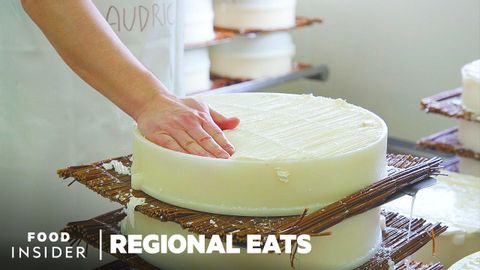
Subtitles & vocabulary
How Brie De Meaux Cheese Is Made In France | Regional Eats
00
林宜悉 posted on 2020/11/06Save
Video vocabulary
process
US /ˈprɑsˌɛs, ˈproˌsɛs/
・
UK /prə'ses/
- Transitive Verb
- To organize and use data in a computer
- To deal with official forms in the way required
- Noun (Countable/Uncountable)
- Dealing with official forms in the way required
- Set of changes that occur slowly and naturally
A2TOEIC
More split
US /splɪt/
・
UK /splɪt/
- Adjective
- No longer married or in a relationship
- (Injured) by cutting it open, as in someone's lip
- Verb (Transitive/Intransitive)
- To become divided or broken along a straight line
- To cause a cut in (lip, etc.)
A2
More texture
US /ˈtɛkstʃɚ/
・
UK /ˈtekstʃə(r)/
- Noun (Countable/Uncountable)
- Quality from different elements, as in music
- Look and feel of a substance or material
- Transitive Verb
- To give a particular look or feel to a surface
B1
More resume
US /rɪˈzum/
・
UK /rɪ'zju:m/
- Noun (Countable/Uncountable)
- A record of your achievements and qualifications
- Verb (Transitive/Intransitive)
- To return to your seat, a place or position
- To continue something after a pause or break
B2TOEIC
More Use Energy
Unlock All Vocabulary
Unlock pronunciation, explanations, and filters
